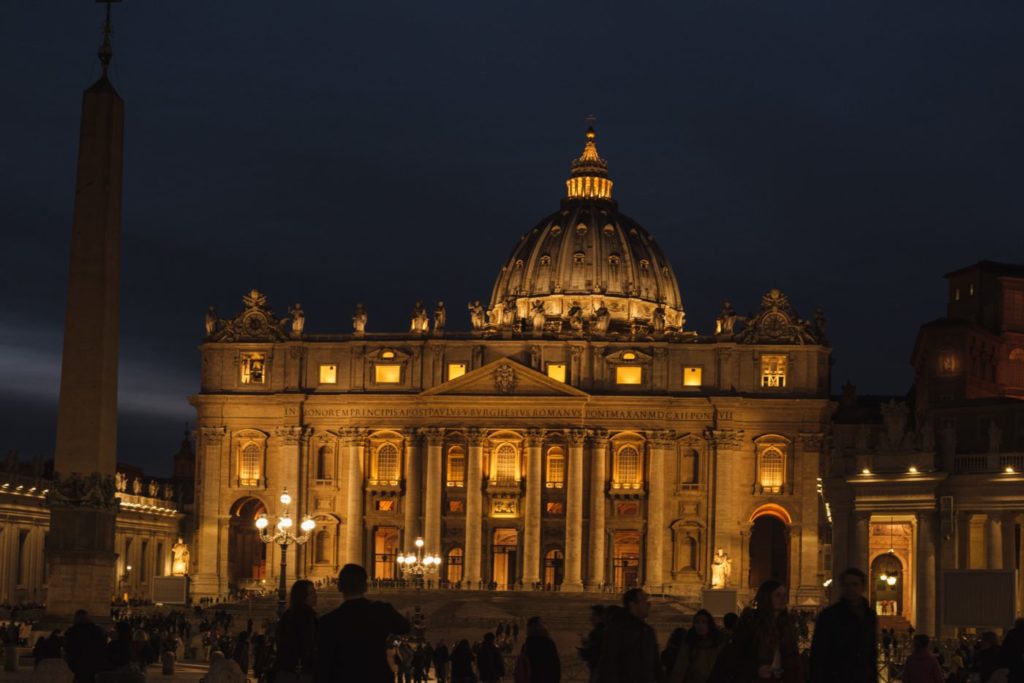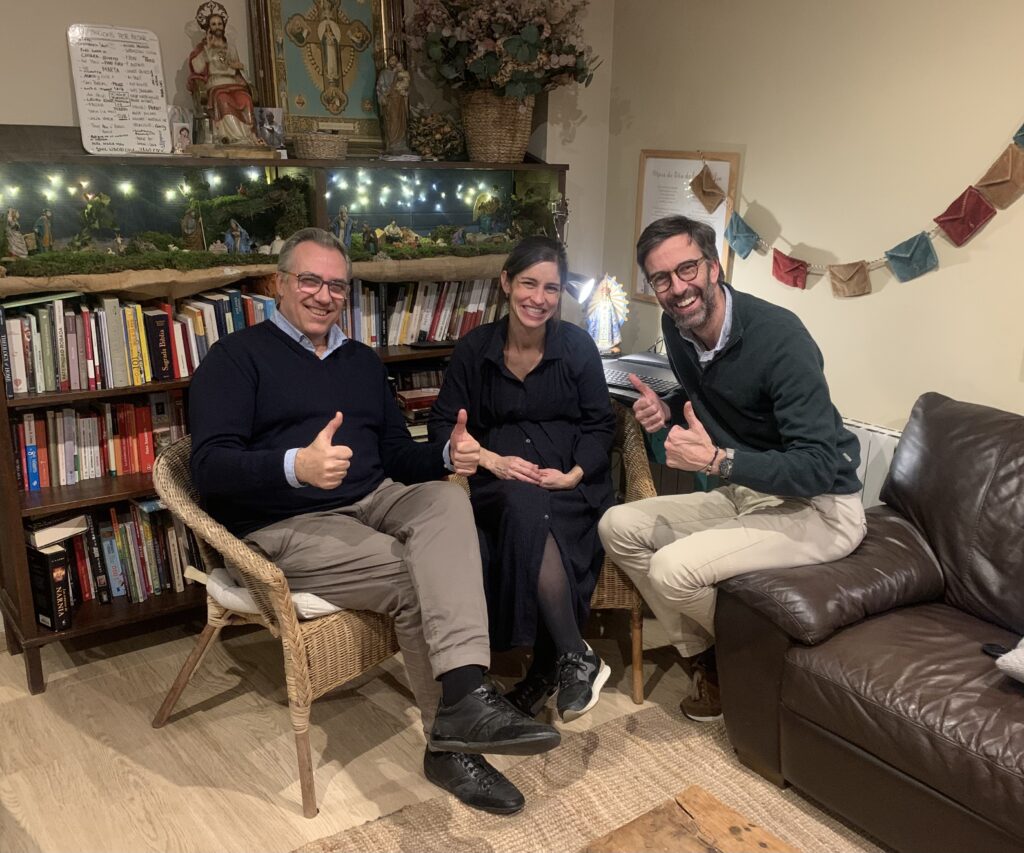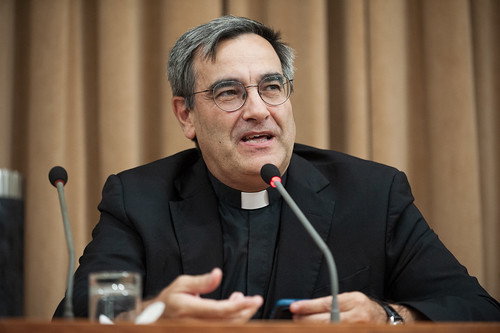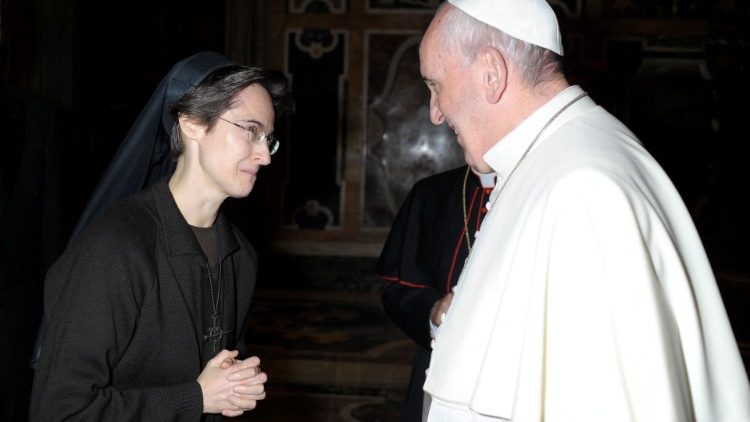Fr. Guerrero on Holy See Financial Statement: New steps forward in transparency, sustainability
The prefect of the Secretariat for the Economy speaks to Vatican Media

The prefect of the Secretariat for the Economy speaks to Vatican Media about the Holy See’s Financial Statement for 2021, noting a 3 million Euro deficit compared to the 33 million projected.
He says the time for sacrifices has not yet ended, as the Holy See record positive progress but still has to divest some assets.
By Vatican New
“We have taken many steps in the right direction regarding transparency, economic protection of the Holy See, and sustainability”. Father Juan Antonio Guerrero Alves, prefect of the Secretariat for the Economy, offers that assessment of the Holy See’s Financial Statement for 2021. The results, he says, are better than expected, but “a very uncertain period lies ahead” and the Holy See must still deal with various structural problems. Fr. Guerrero says the underfunding of the Pope’s mission is an ecclesial problem, and looks with satisfaction at the sale of the London palace which he says took place “in a transparent way.”
Q: Father Guerrero, what is new about this financial statement?
The first news item is the change in the scope of the consolidated report. This contains the financial statement of the entire Holy See. Only the Governorate and the IOR [Vatican Bank] are not included. This means a step forward in terms of transparency and visibility of the overall economic situation of the Holy See; the path taken continues and deepens. In July 2021, the Council for the Economy introduced important changes that mean that the report now better reflects the economic reality of the Holy See. Under the previous parameters, which considered only the Curia, we saw only 35 percent of the total. We have significantly increased in size: we went from 60 entities in the previous fiscal year to 92 in the current period; from total assets of 2.2 billion Euro in 2020 to 3.9 in 2021; from liabilities of 0.8 billion Euro to 2.3; from net assets of 1.4 billion Euro to 1.6; revenues went from 248 million Euro to 1.093 million Euro; costs from 315 million Euro to 1.096 million Euro; and the overall deficit was 3 million Euro.
Q: How was performance over the past year?
A first piece of good news is that the results are better than expected, both in the new and old parameters. In the new parameter, a deficit of 33.4 million was expected, and it was actually 3.3 million. The operating deficit was projected to be 56 million Euro and in reality was 77.7 (it is higher because the Casa Sollievo della Sofferenza Foundation, which added a deficit of 30 million Euro, was not included in the budget due to technical problems). Again, good financial results mitigated the operating results. If we compare the income statement of the Curia—under the old fiscal parameter—with the budget, a projected deficit of 49.6 million Euro results instead in a surplus of 28.8 million Euro (78.4 million Euro better than expected).
Q: To what is this Curia surplus due?
The surplus of the old fiscal parameter is totally due to financial results (44.6 million Euro), but in comparison with the budget, revenues were 21.8 million Euro higher than budgeted, expenses 26.4 million Euro lower than budgeted, and the financial outcome was 30.2 million Euro better than expected. It is important to consider that the financial outcome is mainly in unrealized gains, that is, subject to volatility in financial markets and foreign exchange trends.
Q: So how would you judge the numbers in this budget Financial Statement?
We are not looking for surpluses but for sustainability of the Holy See’s service. A deficit of 3 million Euro in a budget of 1.1 billion is not a lot; it is practically balanced, and it does not seem like a figure to cause concern. But if we do a more detailed analysis, there are some areas for improvement ahead. The initial analysis is that there was an operating deficit of 62 million, which good financial results in 2021 mitigated to leave a deficit of 3 million. When the financial results are not as favorable, as in 2020, an operating deficit emerges.
Q: You have insisted a lot in previous years on a “mission budget”. Is this awareness growing?
I think every institution of the Curia is very aware of its mission to help the Holy Father’s mission, carrying it out with dedication and, in these difficult economic times, trying to do so with austerity, keeping to the essentials of the mission. The Curia, which is the organization that allows for a better comparison with previous years—under the old consolidated budget parameter—continues to show insufficient coverage, which I would define as an ecclesial problem. The Pope’s mission is underfunded. In 2021, the Curia (excluding the results of Peter’s Pence which were included in the budget) had a deficit of 10 million Euro, a 56 million Euro smaller deficit than it had in 2020, which
is good news. It is also good news that the Curia has made sacrifices by reducing expenses, taking care with the part it can control best, while ordinary income continues to fall. The Curia has earned 14 million Euro more and spent 42 million Euro less; but we must recognize, lest we delude ourselves, that the ordinary deficit has remained unchanged, ordinary expenditures have decreased by 15 million Euro, reaching a new low this year, but that is not enough, ordinary revenues have also decreased by 14 million Euro, another new low. The 56 million Euro deficit is due to 33 million Euro better performance in finances and 23 million Euro better extraordinary performance than last year. There
is no doubt that we cannot act only on expenses by reducing them; there will come a time when they cannot be decreased further without compromising the mission, so we are also working on ways to increase revenues. The fact is that the Holy See sells assets every year to cover curial services.
Q: Why is it that with a smaller deficit and even a surplus of almost 29 million Euro in the Curia, you insist that the Holy See is divesting itself?
Of course, this is quite difficult to explain, because although we have a deficit of 3 million Euro in the total of the entities that refer to the Holy See, or a surplus of 28.8 million Euro in the Holy See or Curia—Peter’s Pence, and other papal funds included—in reality the Holy See divests itself every year of an average of 20-25 million Euro. And in this it is quite constant. The reason, besides the financial results being in unrealized gains, is that many donations we receive go to specific causes; they cannot be used for any other purpose. Much of the assets allocated to some entities go themselves to specific aims, and cannot be dedicated to something else. That is, we cannot offset the expenses of
some entities with the revenues of all the others. There are many dicasteries that perform a service for which they do not receive economic remuneration; they are simply cost centers and have practically no revenue, and their service is always carried out with a deficit. And it has to be that way. We are not running a business. Economic criteria play a relative role; economics must serve, not govern, as the Holy Father insists. An interesting recent case is the Tribunal of the Roman Rota, which went from being self-financing to being in deficit once the Pope decided, rightly, to make it free, in order to avoid justice being only for those who can pay for it. Return on assets and internal contributions do not cover mission expenses. That is why the help of Peter’s Pence, which finances the Pope’s charitable works and mission, as well as the contribution of the dioceses, is essential. Each year’s donations, and what the Holy See can generate, cannot fund all the expenses of the entities that have no revenues, and the Holy See has to suffer an erosion of 20-25 million in assets each year.
Q: The new budget includes two Italian hospitals. At a time of crisis for Catholic healthcare: how are they operating?
Yes, Catholic healthcare is itself going through a difficult time in Italy. We have two hospitals included in the consolidated budget. One is the Bambin Gesù. With a larger budget than that of the Curia, it is proceeding in the right direction, and is an economically healthy hospital; in recent years it has dealt well with the crisis due to Covid. The other is the Casa Sollievo della Sofferenza, which must deal with its economic crisis and take urgent measures so as not to question its sustainability. The new entities included in the budget have allowed us to record all assets and liabilities and obtain a more realistic balance sheet; that is, we have been able to recognize all the obligations contracted by the Holy See. We have a better map of strengths and weaknesses.
Q: Another issue that emerges from this balance sheet is that of the Pension Fund and the liabilities representing post-employment benefits. What do the projections look like?
Pensions are a problem in almost every state, and our Pension Fund is no exception. In fact, I would say that—given its small size—Vatican pensions are better off and more secure than in many neighboring countries. This is one of the issues to which attention has been drawn for years, with greater or lesser alarmism, to paint a dark future economic scenario. We have included for the first time in the financial statements the net liability of the Pension Fund for post-employment benefits according to the 2019 actuarial valuation: 631.4 million Euro according to IPSAS 39 (which is the correct way of valuing it, even if it is less favorable). This is the part that corresponds to the Holy See
of a total net liability of 1 billion Euro, which also includes the personnel of the Vicariate and the Governorate. There is no doubt that we are not endowing the Pension Fund sufficiently to enable it to meet its future obligations or that we are promising more than we can actually afford. The good news is that there is still time to introduce corrective, non-traumatic measures, but we need to do it soon. Included in the budget, also for the first time, is the net liability of the 2021 Health Care Fund for post-employment benefits, which according to the actuarial valuation is 171.2 million in equity.
Q: How do you intend to take action?
When we talk about liabilities, we are not referring to a current deficit. Rather, we are recognizing that we have taken on certain obligations that, assessed today, we may not be able to address at some point in the future with the current allocation. That is, either we allocate more money so that this foreseeable future situation will not occur, or we adjust benefits to possibilities. Either allocate more money or promise less performance. The last two times there was awareness of the problem in the Pension Fund, the Holy See allocated more money. However, this is only a short-term palliative fix, which does not solve the structural problem whereby, in the long run, contributions will not be
sufficient to compensate for the promised benefits.
Q: What are your predictions for the future?
We are looking at a very uncertain time ahead. We don’t have a lot of variables on which to operate to deal with the crisis. We don’t have fiscal or monetary policy, and we don’t have control over a large portion of revenues. Beyond our structural problems, the global situation—war, inflation, lack of supplies, financial uncertainty, etc.—creates new challenges and opportunities for us. We cannot say that the time for sacrifice is over; 2022 will be a particularly difficult year and so will 2023. Now we have to face the budget for 2023, which does not allow us to be very cheerful, although the pressure from Covid has decreased.
Q: What can you tell us about the new Human Resources Department?
As far as human resources is concerned, we are currently providing continuity to what has been done so far. We have a work plan for the next few years, the new director will take office in September, and we hope that he will be able to introduce improvements, but they will take time: improving the work climate where necessary, motivation, career path, identification with the Curia’s service to the Church. The new Apostolic Constitution is full of indications and suggestions on what it means to serve the Church, starting with the Roman Curia. Serving in the Curia is not simply a job; it is a mission. There is still much to be done.
Q: How do you judge the results on the road to transparency?
In recent years, we have taken many steps in the right direction of transparency, economic protection of the Holy See, and sustainability. The dicasteries and curial institutions are implementing procedures and taking steps in the right direction. We have recently published the accounts of Peter’s Pence, what we received and how we used it. We have also begun the project of centralizing financial investments requested by the Pope years ago; we have approved an investment policy and an Investment Committee has been appointed. But we are still moving slowly. Procedures have been introduced to protect us. We have carried out the sale of the London building transparently and smoothly, following the correct procedures. The approval of the extraordinary acts of administration has in turn introduced an oversight mechanism that invites people to follow procedures. The lifting of secrecy on economic matters has made us more transparent…. We are on the right path.
Related

Let God be God
Albert Cortina
11 March, 2025
25 min

Fernando Puig, new rector of Santa Croce
Fundación CARF
19 February, 2025
6 min

Unwanted loneliness
Exaudi Staff
18 February, 2025
25 min

Sister Raffaella Petrini appointed as new president of Vatican Governorate
Exaudi Staff
17 February, 2025
1 min
 (EN)
(EN)
 (ES)
(ES)
 (IT)
(IT)

